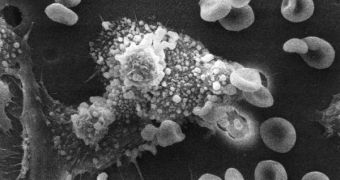Blurry, low-sensitivity optical images of diseased tissues have been a nightmare for oncologists and other healthcare experts to analyze and base conclusions on, simply because the resolution of the images was very poor. Some four years ago, Case Western Reserve University (CWRU) Professor of Biomedical Engineering Dave Wilson got fed up with this, and set out to create new imaging methods that would offer a better resolution for physicians to act upon. Now, thanks to his new method, preclinical imaging studies can reveal single cancer cells in great detail.
In addition to this remarkable feat, his new method can also pinpoint the exact location of the diseased cell within a 3D-model image of the affected area. This has the potential to make surgeons' jobs a lot easier, as they will no longer have to look for the cancerous cells on their own. Moreover, the new technique also allows experts to, for example, count the number of cells in an organ. Known as cryo-imaging, the method can even compare normal and abnormal hearts, and tell the difference.
Essentially, it is capable of literally deconstructing a sample, layer by layer, and then assembling the information it collected into a 3D model of the tissue, which researchers can explore at will, from all possible angles. “You can't meet this resolution from outside the body,” Wilson says. Details of the remarkable achievement can be found in the latest issue of the scientific journal Annals of Biomedical Engineering. The paper also provides extensive knowledge on the complex software Wilson and his team created especially for the cryo-imaging system.
“This device provides superb resolution and sensitivity to identify fluorogenic compounds or cells virtually anywhere within a specimen. No longer do we need to 'guess' which cells are taking up agents from radiological biodistribution studies. We now can visualize them,” CWRU Associate Professor of Radiology and Biomedical Engineering James Basilion adds. He has not been a direct part of the investigation, but has seen the results first-hand. This research was initially funded through a Third Frontier grant from the state of Ohio, and later by a $1.5-million grant from the US National Institutes of Health (NIH).

 14 DAY TRIAL //
14 DAY TRIAL //